- Home
- Roxane Gay
Bad Feminist: Essays Page 9
Bad Feminist: Essays Read online
Page 9
This matter of likability is largely a futile one. Oftentimes, a likable character is simply designed as such to show that he or she is one who knows how to play by the rules and cares to be seen as playing by the rules. The likable character, like the unlikable character, is generally used to make some greater narrative point.
Often in literary criticism, writers are told that a character isn’t likable, as if a character’s likability is directly proportional to the quality of a novel’s writing. This is particularly true for women in fiction. In literature, as in life, the rules are all too often different for girls. There are many instances in which an unlikable man is billed as an antihero, earning a special term to explain those ways in which he deviates from the norm, the traditionally likable. The list, beginning with Holden Caulfield in The Catcher in the Rye, is long. An unlikable man is inscrutably interesting, dark, or tormented, but ultimately compelling, even when he might behave in distasteful ways. This is the only explanation I can come up with for the popularity of, say, the novels of Philip Roth, who is one hell of a writer but who also practically revels in the unlikability of his men, with their neuroses and self-loathing (and, of course, humanity) boldly on display from one page to the next.
When women are unlikable, it becomes a point of obsession in critical conversations by professional and amateur critics alike. Why are these women daring to flaunt convention? Why aren’t they making themselves likable (and therefore acceptable) to polite society? In a Publishers Weekly interview with Claire Messud about her novel The Woman Upstairs, which features a rather “unlikable” protagonist, Nora, who is bitter, bereft, and downright angry about what her life has become, the interviewer said, “I wouldn’t want to be friends with Nora, would you? Her outlook is almost unbearably grim.” And there we have it. A reader was here to make friends with the characters in a book and she didn’t like what she found.
Messud, for her part, had a sharp response for her interviewer.
For heaven’s sake, what kind of question is that? Would you want to be friends with Humbert Humbert? Would you want to be friends with Mickey Sabbath? Saleem Sinai? Hamlet? Krapp? Oedipus? Oscar Wao? Antigone? Raskolnikov? Any of the characters in The Corrections? Any of the characters in Infinite Jest? Any of the characters in anything Pynchon has ever written? Or Martin Amis? Or Orhan Pamuk? Or Alice Munro, for that matter? If you’re reading to find friends, you’re in deep trouble. We read to find life, in all its possibilities. The relevant question isn’t “Is this a potential friend for me?” but “Is this character alive?”
Perhaps, then, unlikable characters, the ones who are the most human, are also the ones who are the most alive. Perhaps this intimacy makes us uncomfortable because we don’t dare be so alive.
In How Fiction Works, James Wood says,
A great deal of nonsense is written every day about characters in fiction—from the side of those who believe too much in character and from the side of those who believe too little. Those who believe too much have an iron set of prejudices about what characters are: we should get to “know” them; . . . they should “grow” and “develop”; and they should be nice. So they should be pretty much like us.
Wood is correct, in part, but the ongoing question of character likability leaves the impression that what we’re looking for in fiction is an ideal world where people behave in ideal ways. The question suggests that characters should be reflections not of us, but of our better selves.
Wood also says, “There is nothing harder than the creation of fictional character.” I can attest to this difficulty, though with perhaps less hyperbole. I have, indeed, found several other tasks harder over the years. Regardless, characters are hard to create because we need to develop people who are interesting enough to hold a reader’s attention. We need to ensure that they are some measure of credible. We need to make them distinct from ourselves (and, in the best of all words, from those in our lives, unless of course there is a need to settle scores). Somehow they need to be well developed enough to carry a plot, or carry a narrative without a plot, or endure the tribulations we writers tend to throw at them with alacrity. It’s no wonder so many characters are unlikable, given what they have to put up with.
It is a seductive position writers put the reader in when they create an interesting, unlikable character—they make the reader complicit, in ways that are both uncomfortable and intriguing.
If people with messy lives are the point of certain narratives, if unlikable women are the point of certain narratives, novels like Battleborn, Treasure Island!!!, Dare Me, Magnificence, and many others exhibit a delightful excess of purpose, with stories filled with women who are deemed unlikable because they make so-called bad choices, describe the world exactly as they see it, and are, ultimately, honest and breathtakingly alive.
These novels depict women who are clearly not participating in their narratives to make friends and whose characters are the better for it. Freed from the constraints of likability, they are able to exist on and beyond the page as fully realized, interesting, and realistic characters. Perhaps the saying “the truth hurts” is what lies at the heart of worrying over likability or the lack thereof—how much of the truth we’re willing to subject ourselves to, how much we are willing to hurt, when we immerse ourselves in the safety of a fictional world.
Sara Levine’s Treasure Island!!! features a narrator who is unlikable in curious ways. She is utterly self-obsessed, acts without considering consequences, and always makes choices that will benefit herself over others. She is intensely preoccupied with the book Treasure Island and sets out to live her life by the book’s core values: BOLDNESS, RESOLUTION, INDEPENDENCE, and HORN-BLOWING. As the narrator careens from one self-created disaster to another, she is unrepentant. There is no redemption or lesson learned from misdeeds. There is no apology or moral to the story, and that makes an already incisive and intelligent novel even more compelling.
When you think about it, these core values the narrator in Treasure Island!!! seeks to live by—BOLDNESS, RESOLUTION, INDEPENDENCE, and HORN-BLOWING—are characteristics that define how supposedly unlikable women lead their fictional lives.
In Pamela Ribon’s You Take It from Here, a woman, Smidge, is dying of lung cancer and wants her best friend, Danielle, to essentially finish the job of raising her daughter and being her husband’s companion in grief. The book’s premise is an interesting one, but what really stands apart is how deeply unlikable Smidge is. She is the kind of person who, it might seem, shouldn’t have any friends—bossy, intense, controlling, unrepentant, and manipulative. And yet. She has a best friend, a daughter, a husband, and a community of people who will deeply mourn her when she is gone. Ribon’s steadfastness in this character’s lack of likability is admirable. She never panders by making Smidge somehow have some kind of epiphany of character simply because she is dying. Ribon is unwavering in what she shows us of Smidge, and the novel is the better for it.
A customer review of You Take It from Here on Amazon.com from Danae Savitri states, “I never warmed up to Smidge as a character, thought she suffered from borderline personality disorder, common among people who are charismatic narcissistics, who alternately bully, manipulate, and charm others around them.” Instead of judging the book, she calls into question a woman’s likability. Again, there is an armchair diagnosis of mental disease. Pathologizing the unlikable in fictional characters is an almost Pavlovian response.
Dare Me, by Megan Abbott, is a book about high school cheerleaders, but it is nothing like what you might expect. Populated by women who act with boldness, resolve, independence, and a prioritizing of the self, these mighty principles from Treasure Island!!!, Dare Me is both engaging and terrifying because it reveals the fraught intimacy between girls. It’s a novel about bodies and striving for perfection and ambition and desire so naked, so palpable, you cannot help but want the deeply flawed women in the book to get what they want, no matter how terribly they go about getting it. The young women at t
he center of the novel, Beth and Addy, are friends as much as they are enemies. They betray each other and they betray themselves. They commit wrongs, and still they are each other’s gravitational center. On the phone, after a drunken night, Beth asks Addy if she remembers
how we used to hang on the monkey bars, hooking our legs around each other, and how strong we got and how no one could ever beat us, and we could never beat each other, but we’d agree to each release our hands at the count of three, and that she always cheated, and I always let her, standing beneath, looking up at her and grinning my gap-toothed, pre-orthodontic grin.
It is a moment that shows us how Addy has always seen Beth plainly, and understood her and loved her nonetheless. Throughout the novel Beth, and Addy to an extent, remains unlikable, remains flawed, but there is no explanation for it, no clear trajectory between cause and effect. Traditional parameters of likability are deftly avoided throughout the novel in moments as honest and no less poignant as these.
Susan Lindley, a widow, has to move on after her husband’s tragic death in Lydia Millet’s Magnificence. From the outset, we know she was unfaithful to her husband. She inherits her uncle’s mansion, filled with a rotting taxidermy collection, and sets about making some kind of order, both in the mansion and in her own life. She has a daughter who is involved with her boss and a boyfriend who is married to another woman. She feels responsible for her husband’s death but is matter-of-fact in reconciling herself to this. “Was she relieved, slut that she was?” Susan thinks. “Was there something in her that was relieved by any of this? If anyone could admit such a thing, she should be able to. She was not only a slut but a killer.” Susan does go on to acknowledge that she feels a profound absence in the loss of her husband, a “freedom of nothing,” and throughout the novel she indulges in this freedom; she embraces it.
So much of Magnificence is grounded solely in Susan’s experiences, her awkward perceptions of the world she has created and continues to create for herself. We also have the pleasure of seeing a woman in her late forties as a deeply sexual being who is equally unashamed in her want for material things as she becomes more and more attached to the mansion she has inherited. Though the prose often gives over to lush excess and meditation, what remains compelling is this woman who reveals little remorse for her infidelities and the ways she tends to fail the people in her life. In a lesser novel, such remorse would be the primary narrative thrust, but in Magnificence we see how a woman, one deemed unlikable by many, is able to exist and be part of a story that expands far beyond remorse and the kinds of entrapments that could hold likable characters back. We are able to see just what the freedom of nothing looks like.
The short story collection Battleborn, by Claire Vaye Watkins, contains many stories with seemingly unlikable women. As much as the stories are about place, all set, in some form, in the desert of the American West, several stories are about women and their strength, where their strength comes from, and how that strength can fail in unbearably human ways. The phrase “battle born” is, in fact, Nevada’s state motto—meant to represent the state’s strength, forged from struggle. In perhaps the most powerful story, “Rondine al Nido,” there is an epigraph at the beginning. Normally, I do not care for epigraphs. I don’t want my reading of a story to be framed by the writer in such an overt way. This story’s epigraph, though, is from the Bhagavad Gita, and reads, “Now I am become Death, the destroyer of worlds.” From the outset we know that only ruin lies ahead, and the story becomes a matter of learning just how that ruin comes about. We learn of a woman who “walks out on a man who in the end, she’ll decide, didn’t love her enough, though he in fact did love her, but his love wrenched something inside him, and this caused him to hurt her.” Really, though, this is a story about when the woman was a girl, sixteen, with a friend, Lena, the kind who would follow the narrator, “our girl,” wherever she went. There is an evening in Las Vegas, and an incident in a hotel room with some boys the girls meet, one that will irrevocably change the friendship, one that could have been avoided if a flawed young woman didn’t make the wrong choice, the choice that makes the story everything.
Perhaps the most unlikable woman in recent fictional memory is Amy in Gillian Flynn’s Gone Girl, a woman who goes to extraordinary lengths—faking her own murder and framing her husband, Nick—to punish his infidelity and keep him within her grasp. Amy was so excessively unlikable, so unrepentant, so shameless, that at times this book is intensely uncomfortable. Flynn engages in a clever manipulation in which we learn more and more about both Nick and Amy in small moments, so that we never quite know how to feel about them. We never quite know if they are likable or unlikable, and then we do know that they are both flawed, both terrible, and stuck together in many ways, and it is exhilarating to see a writer who doesn’t blink, who doesn’t pull back.
There is a line of anger that runs throughout Gone Girl, and for Amy, that anger is born of the unreasonable burdens women are so often forced to bear. The novel is a psychological thriller, but it is also an exquisite character study. Amy is, by all accounts, a woman people should like. She’s “a smart, pretty, nice girl . . . with so many interests and enthusiasms, a cool job, a loving family. And let’s say it: money.” Even with all these assets, Amy finds herself single at thirty-two, and then she finds Nick.
The most uncomfortable aspect of Gone Girl is the book’s honesty and how desperately similar many of us likely are to Nick and Amy in the ways they love and hate each other. The truth hurts. It hurts, it hurts, it hurts. When we finally begin to see the truth of Amy, she says of the night she met Nick,
That night at the Brooklyn party, I was playing the girl who was in style, the girl a man like Nick wants: the Cool Girl. Men always say that as the defining compliment, don’t they? She’s a cool girl. Being the Cool Girl means I am a hot, brilliant, funny woman who adores football, poker, dirty jokes, and burping, who plays video games, drinks cheap beer, loves threesomes and anal sex, and jams hot dogs and hamburgers into her mouth like she’s hosting the world’s biggest culinary gang bang while somehow maintaining a size 2, because Cool Girls are above all hot. Hot and understanding . . . Men actually think this girl exists. Maybe they’re fooled because so many women are willing to pretend to be this girl.
This is what is so rarely said about unlikable women in fiction—that they aren’t pretending, that they won’t or can’t pretend to be someone they are not. They have neither the energy for it nor the desire. They don’t have the willingness of a May Welland to play the part demanded of her. In Gone Girl, Amy talks about the temptation of being the woman a man wants, but ultimately she doesn’t give in to the temptation to be “the girl who likes every fucking thing he likes and doesn’t ever complain.” Unlikable women refuse to give in to that temptation. They are, instead, themselves. They accept the consequences of their choices, and those consequences become stories worth reading.
How We All Lose
Discussions about gender are often framed as either/or propositions. Men are from Mars and women are from Venus, or so we are told, as if this means we’re all so different it is nigh impossible to reach each other. The way we talk about gender makes it easy to forget Mars and Venus are part of the same solar system, divided by only one planet, held in the thrall of the same sun. Unfortunately, many books released in 2012 did little to productively reframe the cultural conversation about gender. Instead, these books offered rather narrow insights into women and men and were, at times, disappointing for the opportunities they missed to bring nuance to how we think about gender.
If women’s fortunes improve, it must mean men’s fortunes will suffer, as if there is a finite amount of good fortune in the universe that cannot be shared equally between men and women. This is certainly how I felt while reading Hanna Rosin’s interesting and intelligent, but ultimately frustrating, The End of Men: And the Rise of Women. What does it even mean to suggest that the end of men is explicitly connected to the rise of women? There’s
no denying women are doing better than they ever have, but is that really saying much? When you consider what life was like for women before suffrage, before Title IX, before the Equal Pay Act, before Roe v. Wade, before any number of changes that made life merely tolerable, most any success women encountered would seem like a rise in circumstance.
Rosin has clearly done a great deal of research and makes compelling arguments. I particularly appreciated the way she tried to advance the conversation about gender by upending our expectations. So often when we talk about gender, we have tunnel vision, where we can only understand the lives of women as being grounded in disadvantage (the endless “having it all” debate, for example). Rosin complicates that notion by revealing the many ways women are gaining the upper hand in education, several industries, and the culture at large.
I was skeptical as I read The End of Men, but Rosin makes it easy to respect many of her ideas. At the same time, it’s pretty easy to frame an argument convincingly by being selective in the data presented. No writer or critic is free from this selectivity, but at times it stands out as problematic in The End of Men. In the chapter “Pharm Girls: How Women Remade the Economy,” Rosin discusses the rise of women in the pharmaceutical industry. She notes that “in 2009, for the first time in American history, the balance of the workforce tipped toward women, who continue to hover around 50 percent.” This is an encouraging, important statistic, but according to 2010 census data, women still earn 77 percent of what men earn and that cannot be ignored. We make up half the workforce but pay a pretty steep price for that privilege.
Throughout the chapter, Rosin highlights the great strides women have made as pharmacists, how they are practically dominating the field, and it is truly inspiring to see how far we’ve come in a field once entirely male-dominated. At the same time, this is only one field. For every argument there is a counterargument. Women are doing well in pharmacy, but the statistics are starkly different in, say, the sciences and most engineering disciplines.

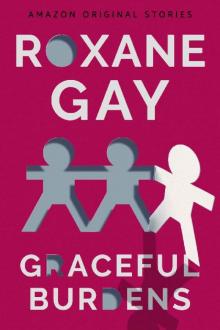 Graceful Burdens (Out of Line collection)
Graceful Burdens (Out of Line collection)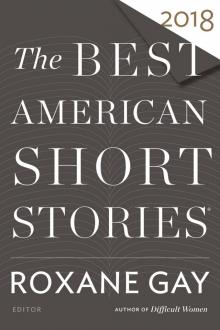 The Best American Short Stories 2018
The Best American Short Stories 2018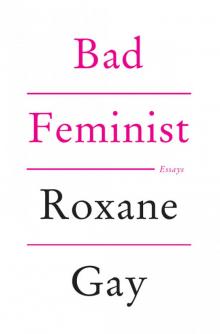 Bad Feminist
Bad Feminist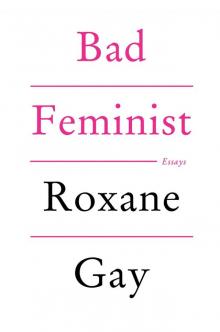 Bad Feminist: Essays
Bad Feminist: Essays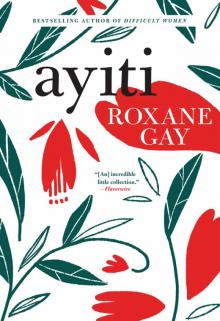 Ayiti
Ayiti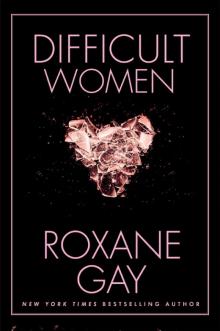 Difficult Women
Difficult Women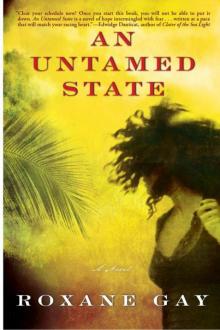 An Untamed State
An Untamed State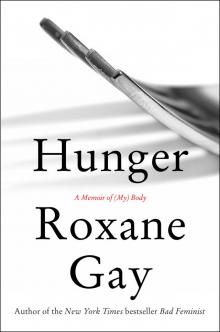 Hunger
Hunger